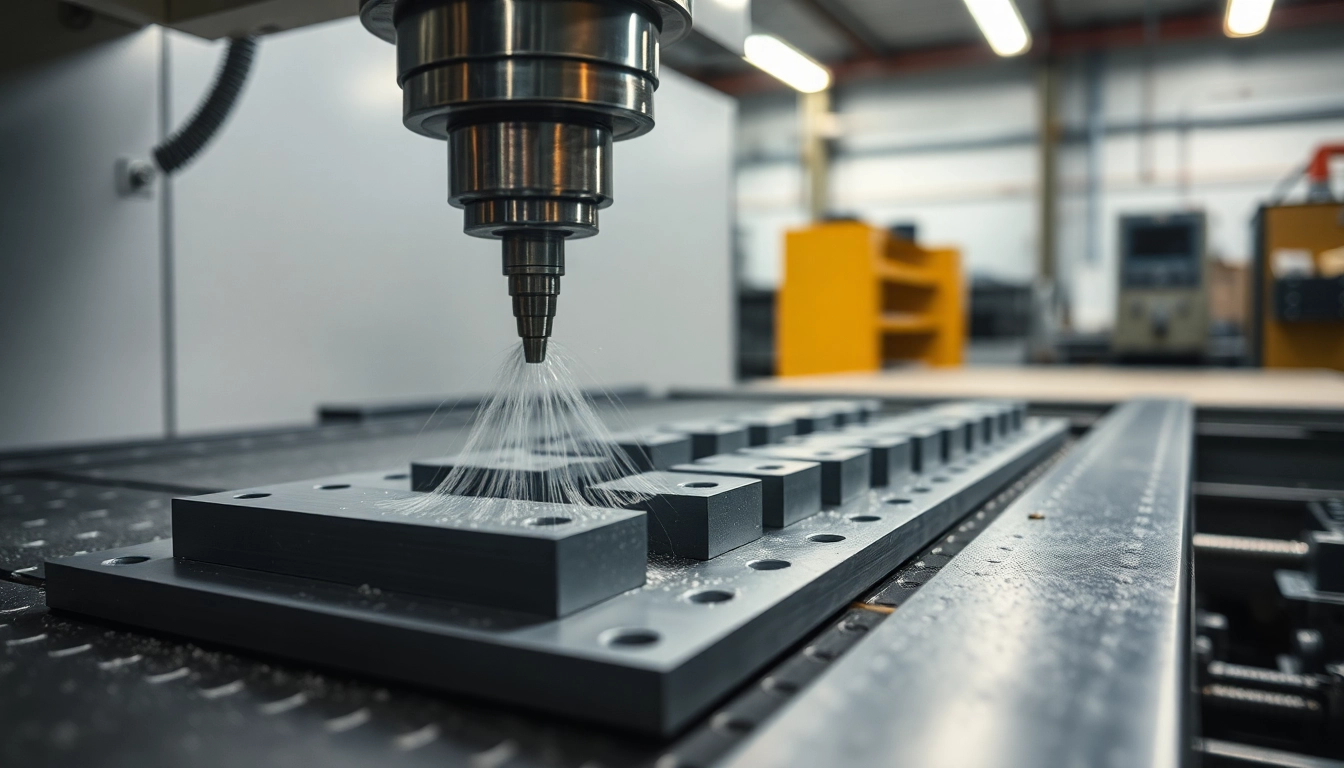Understanding the Basics of Boom Lift Rental
In the modern construction, maintenance, and industrial sectors across the UK, access to elevated work sites is a critical component for efficiency and safety. Boom lifts, also known as cherry pickers or aerial work platforms, have revolutionized how professionals reach heights safely and effectively. For many businesses, the decision to rent a boom lift rather than purchasing one outright offers unparalleled flexibility, cost savings, and technological advantages. Whether you’re undertaking an indoor refurbishment project or outdoor infrastructure work, selecting the right boom lift rental is fundamental to ensuring that your project proceeds smoothly and safely.
To make an informed choice, it is essential to understand the different types of boom lifts available for rent, their features, common applications, and the factors influencing rental decisions. This comprehensive guide aims to demystify the process, providing industry insights and practical tips to optimize your rental experience and enhance your project’s success.
Furthermore, for those considering their options, it’s vital to recognize how the right equipment can improve safety standards, project timelines, and overall costs. With the UK’s competitive marketplace for access equipment, understanding the nuances of boom lift rental can save time, money, and mitigate operational risks.
Types of Boom Lifts Available for Rent
The landscape of boom lifts is diverse, designed to cater to specific height, reach, and terrain requirements. Here is an in-depth look at the primary categories:
Articulating Boom Lifts
Articulating boom lifts feature multiple hinged sections, enabling them to navigate complex structures and reach areas obstacles would block for straight-boom equivalents. Ideal for indoor renovations, maintenance on irregular surfaces, and outdoor work around tight spaces, they often provide working heights from 11 meters up to 43 meters. Their flexibility makes them indispensable for multi-level tasks, especially when working around obstacles.
Telescopic Boom Lifts
Telescopic boom lifts, distinguished by their straight, extension arm, are primarily designed to maximize horizontal outreach while maintaining a high lifting capacity. They excel in scenarios requiring maximum outreach, such as façade work, large-scale construction projects, or outdoor industrial maintenance. These machines typically offer working heights up to 70 meters, making them the go-to choice for high-rise projects.
Vertical Mast Lifts (or Vertical Work Platforms)
For work requiring vertical access at limited heights, vertical mast lifts are a versatile, compact solution. Their simple design allows quick deployment in confined spaces for tasks at heights between approximately 5 to 12 meters. They’re commonly used in retail, warehousing, and light industrial maintenance.
Specialized Boom Lifts
Other types include tracked boom lifts, spider lifts, and trailer-mounted variants. These are tailored for terrains where maneuverability and portability are priorities, such as uneven surfaces, scaffolding, or narrow access points. For example, tracked models can access rough terrain, while trailer-mounted lifts are ideal for quick deployment across multiple sites.
Understanding these main categories helps in aligning equipment choice with project needs—balancing height, outreach, terrain, and accessibility considerations for optimal operational effectiveness.
Key Features and Specifications to Consider
When evaluating boom lift rental options, a range of features and specifications influence both performance and safety outcomes. Here is a detailed breakdown:
Working Height and Outreach
The fundamental metric, working height, specifies how high the operator can reach. Complementary to this is the horizontal outreach—how far from the base the lift can extend. Selecting equipment with adequate height and outreach ensures the work can be completed without overextending or multiple repositioning, saving time and reducing safety risks.
Weight Capacity
Operational capacity varies across models, typically ranging from 200 kg to over 600 kg. This capacity determines how much weight—including tools and materials—the lift can safely carry. Overloading can lead to equipment failure or accidents, so understanding capacity limits is critical, especially for tasks involving heavy tools or multiple workers.
Mobility and Terrain Suitability
Features such as four-wheel drive, tracked movement, and self-propulsion enhance mobility across diverse terrains. Indoor applications often prefer lightweight, compact models with non-marking tires to minimize surface damage. Outdoor-heavy projects benefit from all-terrain capabilities.
Power Source
Electric, hybrid, diesel, and gas-powered lifts serve different environments. Electric lifts are quiet and emission-free—perfect for indoor or enclosed settings. Diesel and gas models are more suited for outdoor, rugged environments requiring extended operation time. Hybrid lifts combine benefits, offering cleaner operation with longer run times.
Safety Features
Advanced safety systems such as overload protection, emergency shut-off, tilt sensors, and fail-safe braking are standard in modern rentals. Additionally, features like 360-degree rotation, emergency descent systems, and stability indicators further improve safety margins during use.
Accessories and Attachments
Depending on the project, lifts may require accessories like work platforms, baskets, or tool trays. Compatibility and availability of such attachments can improve efficiency and worker safety.
Common Applications in Various Industries
Boom lifts play a versatile role across numerous sectors, each with unique requirements and operational environments:
Construction and Building Maintenance
From high-rise façade installation to window cleaning and structural repairs, boom lifts allow access to challenging elevations with precision. They enable faster completion of tasks, often replacing scaffolding systems and reducing labor costs.
Electrical and Mechanical Work
Wiring, lighting installation, and HVAC maintenance often demand safe working at heights in confined or awkward spaces. Articulating booms are especially valuable here, providing flexibility in tight settings.
Urban Infrastructure and Public Utilities
Street lighting repairs, traffic signal installations, and telecommunications maintenance benefit from boom lifts’ mobility and height reach, facilitating quick response times and minimal disruption.
Events, Filmmaking, and Art Installations
Creative industries utilize boom lifts for installation of large-scale artworks, staging, lighting rigging, and filming cranes, where stability and smooth operation are essential.
Industrial Manufacturing and Warehousing
High storage racks, maintenance of factory equipment, and inventory management leverage boom lifts’ vertical reach, contributing to safer and more efficient workflows.
Benefits of Renting a Boom Lift for Your Projects
Opting for a boom lift rental rather than ownership can confer multiple advantages, specifically tailored to project dynamics and financial considerations:
Cost-Effectiveness and Flexibility
Purchasing a boom lift involves significant capital investment, maintenance costs, and storage logistics. Renting provides access to the latest models without long-term commitment, enabling businesses to adapt equipment choices to each project’s specific needs. This flexibility ensures optimal performance and cost control.
Improved Safety and Accessibility
Reputable rental companies maintain their fleet to the highest safety standards, providing equipment with up-to-date safety features and certifications. Additionally, operators benefit from proper training and support, reducing accident risks during operation.
Enhanced Productivity and Project Timeline
With quick access to diverse types of boom lifts, projects proceed with minimal delays. Equipment can be delivered directly to the site, and operators are available with expertise, boosting efficiency. The ability to select the ideal lift for each task minimizes downtime and maximizes productivity.
Steps for Selecting and Renting the Perfect Boom Lift
Getting it right begins with a systematic assessment of your project’s requirements. Here’s a step-by-step guide:
Assessing Your Worksite Needs
Start by analyzing the site layout, access points, and environmental conditions. Consider space constraints, ground stability, indoor versus outdoor environment, and proximity to power sources. It’s crucial to measure the maximum height and reach required for safe and efficient work, factoring in possible obstacles.
Choosing the Right Height and Capacity
Match your project needs with equipment specifications. For instance, if working at 15 meters with heavy tools, select a lift rated for the necessary weight and capable of reaching the desired height. Don’t forget to consider future needs—select a model that offers some margin for unforeseen challenges.
Understanding Rental Terms and Delivery Options
Review rental durations, costs, insurance requirements, and support services. Clarify delivery times, setup procedures, and pick-up. Reliable rental companies offer flexible terms, on-time delivery, and technicians’ support, which are essential for keeping your project on schedule.
Additional Considerations
- Operator Certification & Training: Ensure that qualified personnel operate the machinery.
- Maintenance & Inspection: Verify if the rental includes routine inspections and maintenance.
- Insurance & Liability: Confirm coverage and liability policies to safeguard your project against unforeseen damage or accidents.
Best Practices for Operation and Maintenance
Safety and maintenance are the bedrocks of effective boom lift operation. Adhering to best practices reduces risks, extends equipment lifespan, and ensures compliance with UK safety regulations.
Operator Training and Safety Protocols
Only trained, certified operators should handle boom lifts. Proper training covers equipment controls, emergency procedures, and site-specific hazards. Implementing a safety culture, including PPE usage and clear communication, minimizes accidents.
Routine Inspection and Maintenance
Daily pre-operation checks include inspecting tires, controls, safety features, hydraulic systems, and structural integrity. Scheduled maintenance should follow manufacturer guidelines, with documentation maintained for accountability and regulatory compliance.
Return Procedures and Cost Management
Properly clean and inspect equipment before return to prevent additional charges. Record usage and report any damages. Effective planning and clear communication with rental providers can prevent unexpected costs and facilitate smooth rental cycles.
Case Studies and Customer Success Stories
Real-world examples demonstrate the tangible benefits of well-executed boom lift rentals. Here are a few illustrative cases:
Successful Projects Using Boom Lift Rentals
In a recent refurbishment project in Birmingham, a construction firm utilized articulated boom lifts to access complex scaffolding structures. The flexibility of their equipment reduced project duration by 20%, cutting labor costs and enhancing safety.
Testimonials on Service and Equipment Reliability
A roofing company in Manchester highlighted how timely delivery and well-maintained equipment from a reputable rental provider minimized downtime. Their crew appreciated the knowledgeable support staff and modern lifts, which increased overall productivity.
Tips for Maximizing Rental Investment
Ensure proper site assessment, choose equipment with appropriate specifications, invest in operator training, and schedule regular maintenance. These best practices optimize equipment performance and safety, translating into cost savings and project success.



